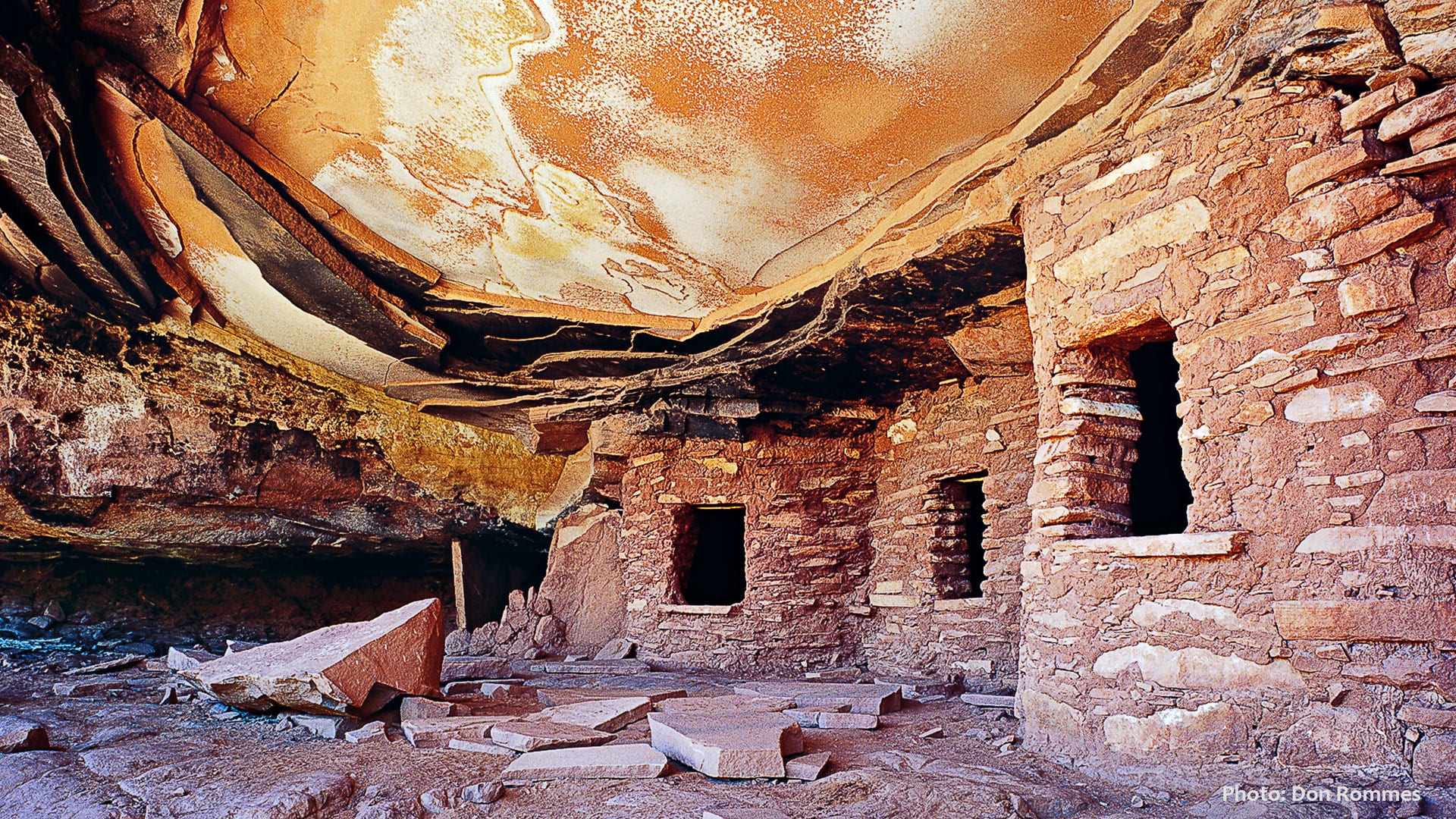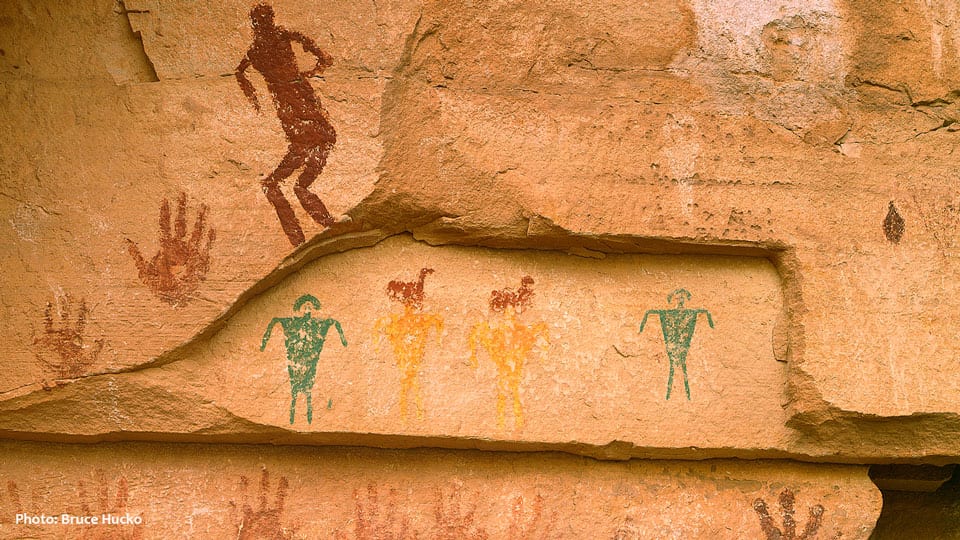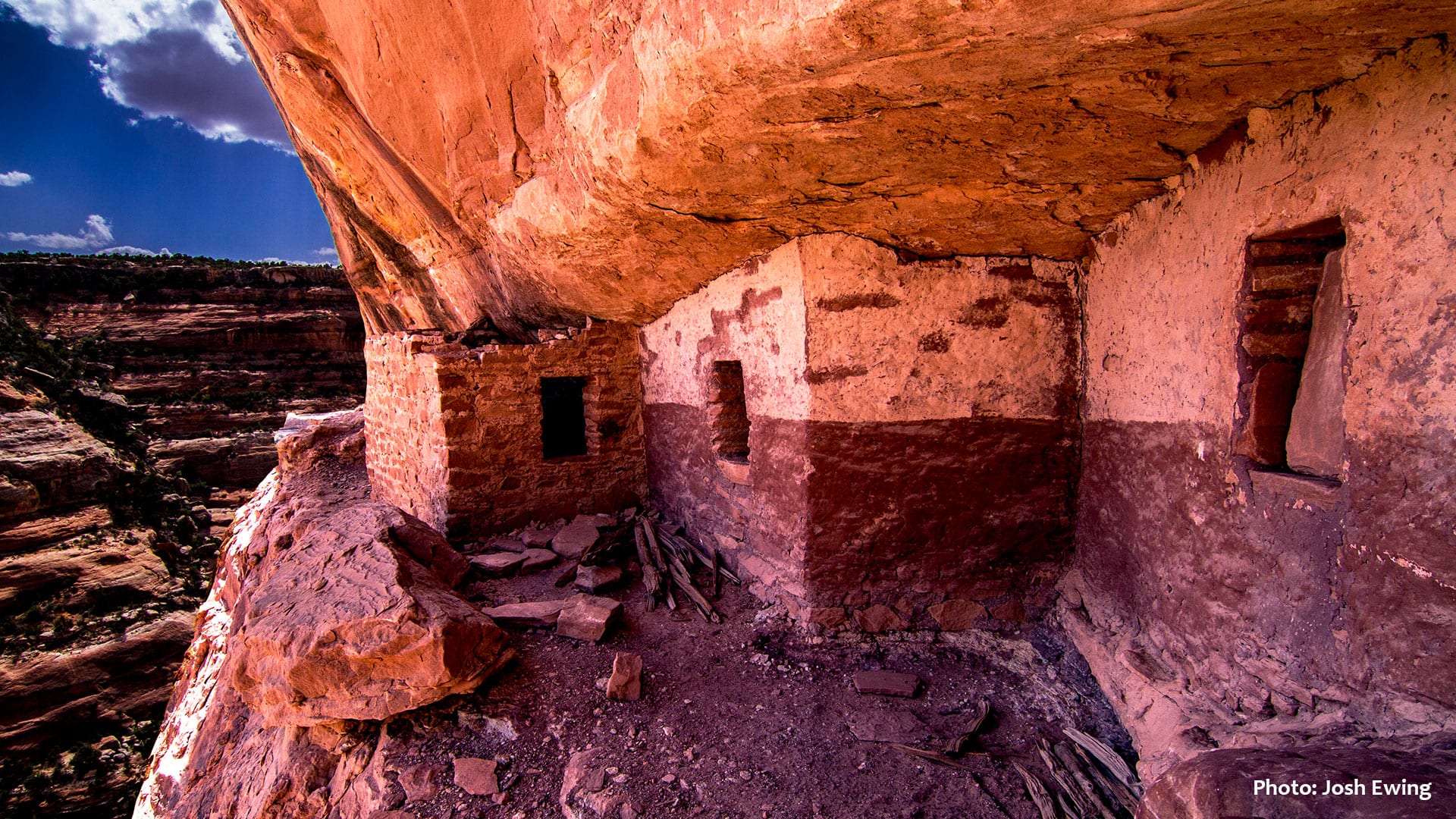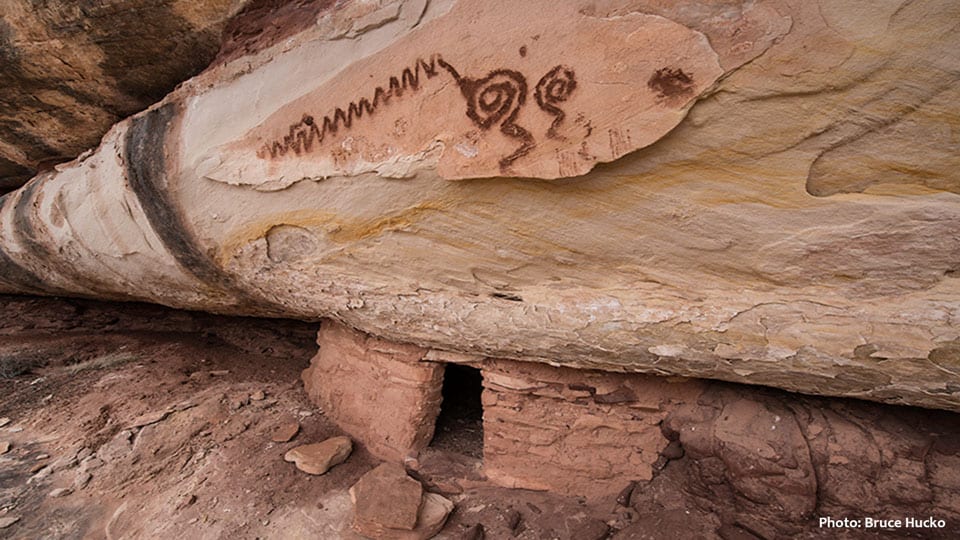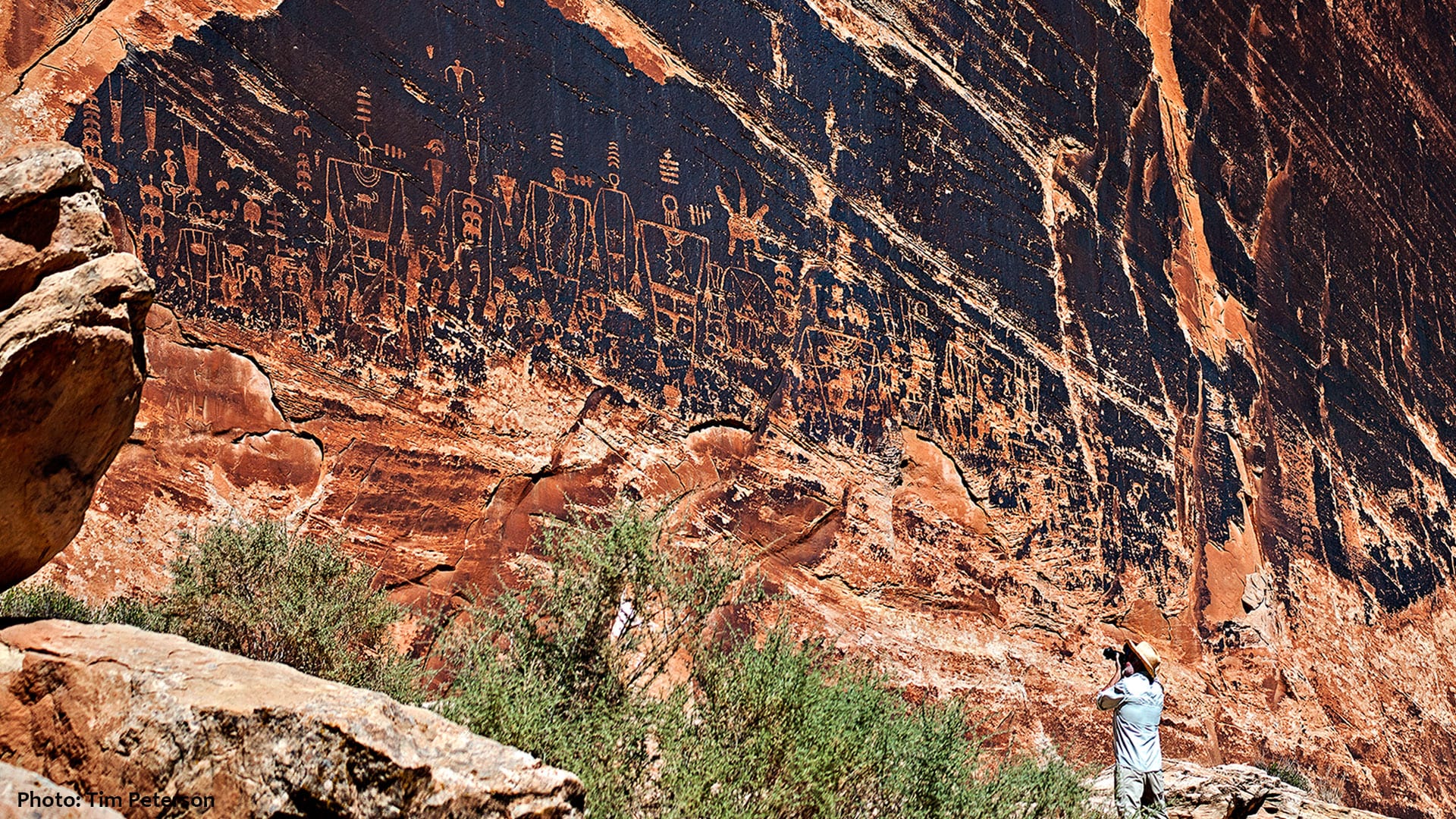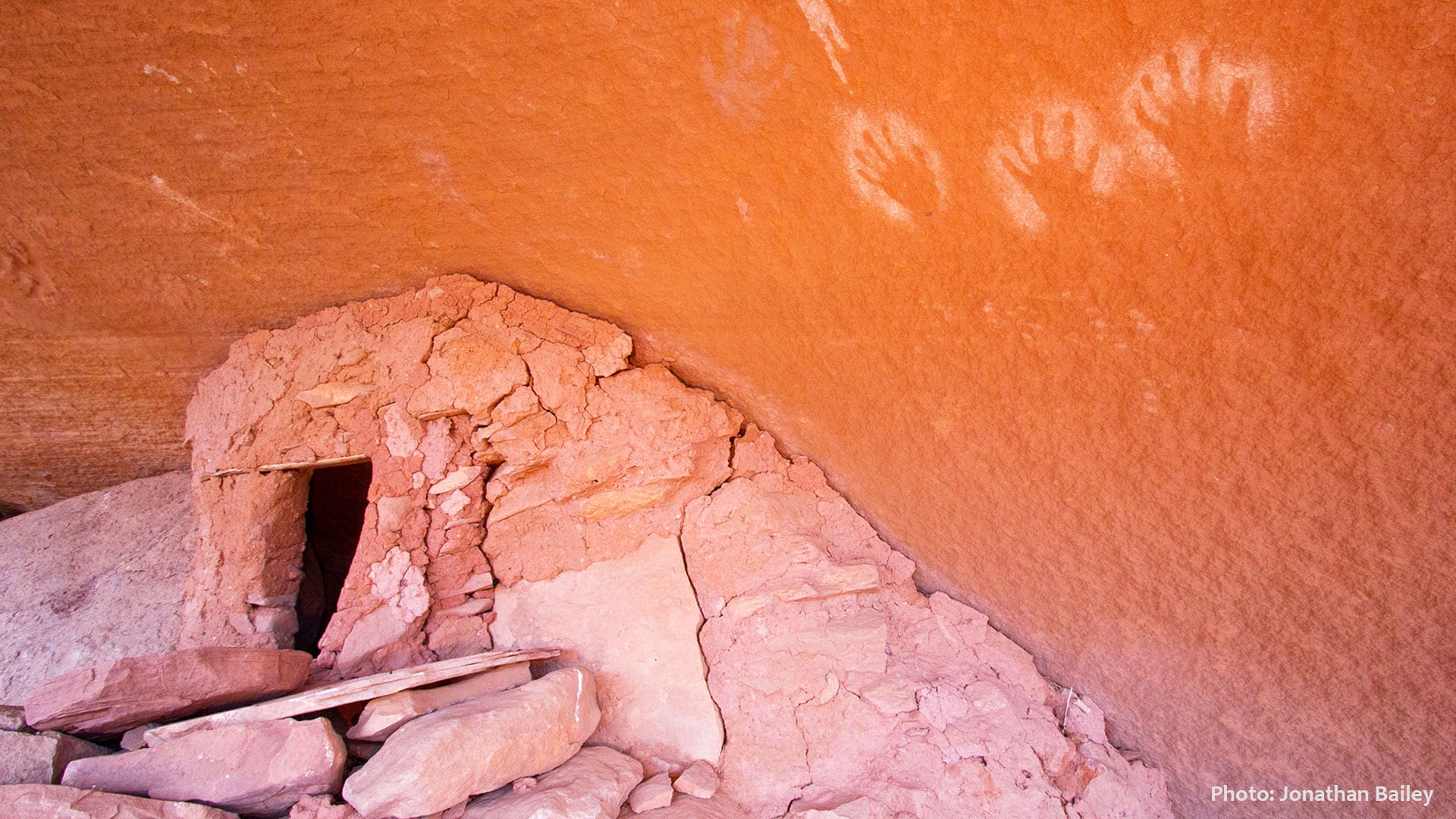edar Mesa is a cultural landscape sacred to many, including the Ute, Hopi and Navajo tribes and other Pueblo peoples. It is an area with an estimated 56,000 archaeological sites and is also home to historical resources like the Hole-in-the-Rock trail forged by Mormon settlers in 1879-1880. Bordered to the north by the Bears Ears and Elk Ridge, to the east by Comb Ridge, to the south by the San Juan River, and to the west by Grand Gulch, it includes globally significant treasures such as Arch Canyon, Owl Canyon and Johns Canyon. The average elevation of Cedar Mesa is 6,500 feet, which is 2,000 feet above the surrounding lands to the south and east.
Cedar Mesa is one of the best places in the world for visitors to gain a sense of tangible contact with the cultural past – archaic, prehistoric and historic. Cedar Mesa contains internationally famous and visually stunning rock art and Ancestral Puebloan cliff dwellings that draw thousands of U.S. and international visitors each year.
Thousands of images speak to the lives, patterns and beliefs of early dwellers. Hundreds of preserved structures are tucked away in alcoves and legends, awaiting the wonder and admiration of the next visitor. Even the surrounding high mesa tops show faint traces of agricultural subsistence – the remains of farm fields and pit houses. Though the archaeological record spans more than 12,000 years, Native peoples believe they have occupied the area since time immemorial. The archeological record found here helps researchers continue to define and study formative eras in human prehistory, from the paleoindian Clovis culture to the early agricultural Basketmaker period and the region’s connections with the famous and powerful cultures based in New Mexico’s Chaco Canyon National Historic Park and Colorado’s Mesa Verde National Park.
Most of the archaeological sites on the mesa and in its canyons were left by Ancestral Pueblo people prior to their migrations south where their descendants live today near and along the Rio Grande Valley. To modern day Pueblo peoples, the Cedar Mesa sites are still occupied by the spirits of their ancestors, and the area still plays a vital role in their sense of their contemporary cultural identity. The Ute, Paiute, and Navajo also have important ties to Cedar Mesa, and they depend on the land for traditional ritual, medicinal, and economic subsistence.

